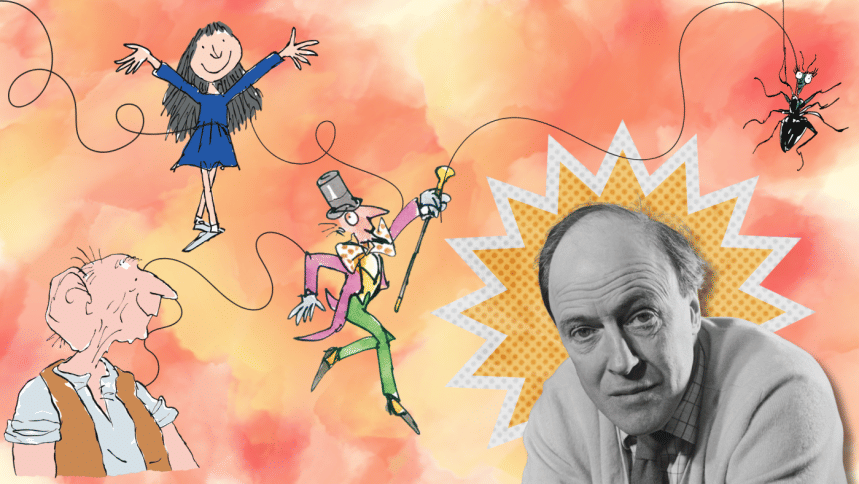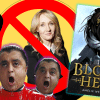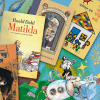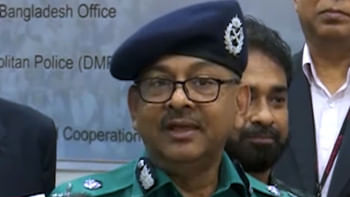Looking back at the whimsical, witty, and wonderful world of Roald Dahl

Amidst my hazy childhood memories, one terrifying phase stands out vividly: the time I was on the lookout for witches. Whenever I went out with my family, I would scan the room for these sinister beings — women with bald heads wearing wigs to hide their baldness and gloves to conceal their claws. They'd have blue spit and extraordinarily large nostrils. This was how Roald Dahl described witches in his book The Witches, and taught his readers to identify and stay safe from them. Since common sense often escaped my nine-year-old self, the practicality of women wearing gloves in Dhaka city did not occur to me. After all, how could Mr Dahl be wrong?
Roald Dahl's master storytelling captivated every child across the world. With his work selling over a million copies, being translated into 60 languages, and adapted into hundreds of movie and theatre productions, Dahl's contribution to children's literature is nothing short of legendary. He originally wrote most of his stories as bedtime tales for his children before they eventually made their way into the hearts of millions as published books.
Dahl's stories create a world of their own. His writings are whimsical, heart-warming, and easy to picture, which makes the reader feel like they are part of the storyteller's universe. Hidden in the simplicity is a message that is as meaningful as it is timeless, one that he never failed to relay to his young readers.
Through his storytelling, he reminds us that we are not just confined to any space but one that is brimming with opportunities, where anything can happen at any time. You might find a giant magical peach growing in your garden, come across a big friendly dream catcher giant, or even a wicked Grand High Witch.
Coming across such interesting characters and ideas as a child was fascinating. It seemed well within the bounds of reality, especially with Dahl's creative stroke, through which he drew parallels between fantastical characters and real people.
In his books, Dahl introduces quirky characters like Willy Wonka in Charlie and the Chocolate Factory and Miss Trunchbull in Matilda. Willy Wonka, though an atypical genius, innovator, and owner of an otherworldly chocolate factory, was a self-absorbed man who did not bode well with criticism. The evil headmistress – Miss Trunchbull – enjoyed scaring and punishing her students.
Through such characters, Dahl conveys to his young audience that the world is filled with people of varying temperaments – some admirable, others flawed, and a few downright villainous. He presents the darker aspects of human nature in a way that is both accessible and understandable to children. In contrast, Dahl, through his protagonists, also influenced young readers to believe in their own abilities and feel empowered in their skin.
My first encounter with Dahl was through Matilda. At the time, the 200-something pages seemed never-ending and were overwhelming for my younger self. However, the scrawny cartoon image of a girl standing on a pile of books in a dark pink coloured book cover was what intrigued me. The illustration of Matilda made me eager to find out the story behind it. The loosely sketched illustration that I am referring to was, of course, the work of Quentin Blake. It would be an injustice to talk about Roald Dahl without also mentioning the brilliant illustrator of his books. Blake's illustrations gave life to Dahl's characters and made sure that his books left a lasting first impression on the readers.
One other thing that resonated with me was how the protagonists had someone with whom they shared a special bond, a companion they could count on. Danny had his father, Matilda had Miss Honey, James had his insect friends, and the boy in The Witches had his grandmother. He reminds us that having someone who believes in you can make a significant difference. Through his stories, he highlights the importance of love, trust, and friendship over the course of one's life.
Although many of us have now become mechanical adults trying to decode Kafka and Dostoevsky, a wave of nostalgia resonates with Roald Dahl's works. Whenever I catch sight of Dahl's vibrant coloured volumes with loosely sketched humorous figures peeking out among my monochrome novels, I am teleported back to afternoons spent with my nani. She was lost in the trance of the cassette playing Lalon Geeti, and I wandered in Mr Willy Wonka's chocolate factory.
Like many things I wish to experience for the first time again, reading Roald Dahl's books is one of them. His books are reminders for shy, quiet kids such as myself that a vast world of imagination exists, where magic is real and there are no limits. His books are a reminder that there is more to life than societal norms, expectations, and the eternal longing for more.
Silwat Quader is a first-year economics student at NSU. Reach her at [email protected]

 For all latest news, follow The Daily Star's Google News channel.
For all latest news, follow The Daily Star's Google News channel. 









Comments